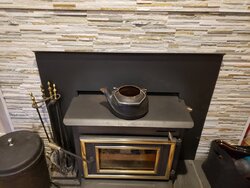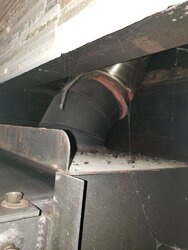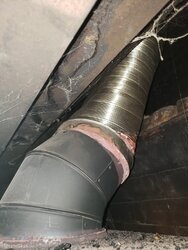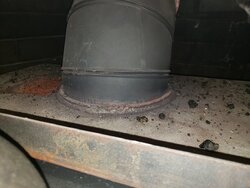I've recently acquired my first house, and with it, my first wood burning stove. It's an Englander 24-JC, and has a catalytic converter. The chimney is in the center of my house, so from what I can tell, there is no easy cleanout door.
I am thinking that the catalytic converter needs to be removed, so that when I climb on the roof and brush the flue, the creosote will be able to fall into the firebox, then I can scoop it out. I've looked up the manual online, but I can't really find any directions on cleaning past how to actually get to the cat converter. I can probably figure out how to remove it, but I'm not sure if that would be the best option.
I'm thinking it would be best to just hire a professional chimney sweep to come and do my first cleaning and show me the best way to clean my particular stove/flue. Is teaching the homeowner how to clean the flue themselves something that a chimney sweep would normally do? Should I expect to pay a little extra to be taught how to do it myself?
I'm also considering texting the previous owner to ask if they have any tips, but I try to avoid disturbing him.
I appreciate any and all advice!
I am thinking that the catalytic converter needs to be removed, so that when I climb on the roof and brush the flue, the creosote will be able to fall into the firebox, then I can scoop it out. I've looked up the manual online, but I can't really find any directions on cleaning past how to actually get to the cat converter. I can probably figure out how to remove it, but I'm not sure if that would be the best option.
I'm thinking it would be best to just hire a professional chimney sweep to come and do my first cleaning and show me the best way to clean my particular stove/flue. Is teaching the homeowner how to clean the flue themselves something that a chimney sweep would normally do? Should I expect to pay a little extra to be taught how to do it myself?
I'm also considering texting the previous owner to ask if they have any tips, but I try to avoid disturbing him.
I appreciate any and all advice!






